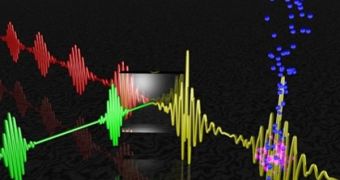An international collaboration of researchers is working on a new method of understanding what happens during chemical reactions. The approach is extremely complex, as it involves tracking the behavior of individual electrons as this happens.
Doing so is a monumentally difficult task, considering that the elementary particle completes a full orbit around an atomic nucleus in just 151 attoseconds. An attosecond is a billionth of a billionth of a second, equal to the time it takes light to travel the length of three hydrogen atoms.
What researchers are trying to accomplish is create laser devices capable of releasing light pulses lasting only one attosecond, or a quintillionth of a second. What this will enable is a clearer understanding of how chemical reactions occur.
These interactions could be understood down to the molecular and atomic levels, which has been in a goal in chemistry research for decades. Once these behaviors are learned, then researchers could begin developing ways of applying the knowledge to engineering, pharmaceutical research and so on.
Eight members of the international team are based at the Massachusetts Institute of Technology's (MIT) Research Laboratory of Electronics (RLE). They are at the forefront of producing the new lasers.
“If you can generate a pulse that has a shorter duration [than 151 attoseconds], then you can investigate dynamics that happen on that time scale,” explains MIT Department of Electrical Engineering and Computer Science adjunct professor Franz Kaertner, the leader of the investigation.
“That connects back to this work from [MIT electrical engineering professor Harold] Edgerton, where he was able to make optical flash photography in the microsecond range and nanosecond range,” he adds.
In order to measure electron dynamics, the team is using a technique called time-resolved spectroscopy. This method requires significant light pulse intensity in order to function, something which previous attosecond lasers could not provide.
At this point, the theoretical framework is in place, and the team has already began constructing the new laser. MIT investigators explain that the machine will be able to produce the required pulses by combining light of various wavelengths.
Whether or not the group will succeed in its endeavor is still uncertain, but scientists are confident in the few avenues of research they have at their disposal. They say that, in a few years, we may be able to finally crack the mystery surrounding atomic interactions during chemical interactions.

 14 DAY TRIAL //
14 DAY TRIAL //